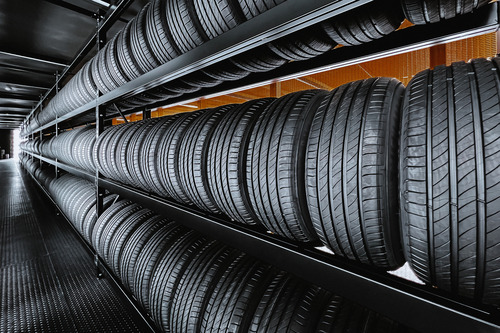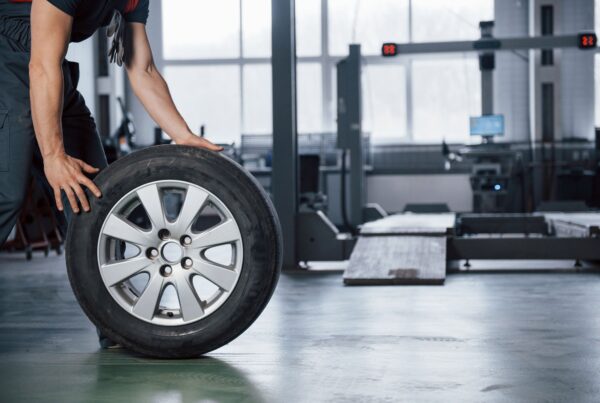When it comes to choosing new tires, the options can feel overwhelming—but focusing on three key essentials can help you find the perfect fit for your adventures, driving style, and budget. Keep these core considerations in mind to ensure you get the right tires for your vehicle and your lifestyle.
Types Of Tires
There are several types of tires designed for specific driving conditions, vehicle types, and performance needs. Understanding the differences between them can help you choose the right tire for your vehicle. Knowing what type of tires your car needs is essential for ensuring safety, performance, and longevity. Here are some common types of tires:
All-Season Tires
All-season tires are the most popular type of tire for everyday vehicles. They are designed to perform well in a variety of conditions, including dry, wet, and light snowy conditions. These tires are built with a tread pattern that provides a balance between traction, handling, and comfort. While they offer convenience for drivers who face a range of weather conditions, they may not perform as well in extreme snow or ice conditions as dedicated winter tires.
Winter Tires (Snow Tires)
Winter tires, also known as snow tires, are designed specifically for colder temperatures and icy, snowy, or wet conditions. They feature deeper treads and special rubber compounds that stay flexible in freezing temperatures, providing better grip and traction in slippery conditions. Winter tires are ideal for drivers who live in regions with harsh winter weather and frequently encounter snow, ice, and slush.
Summer Tires
Summer tires are designed for warm weather and dry roads, offering superior handling and performance compared to all-season tires in these conditions. They have a tread pattern designed for maximum traction on dry pavement and provide excellent grip during high-speed driving. Summer tires are not suitable for cold or wet conditions, as the rubber compound becomes less effective in low temperatures, and they offer limited traction on wet or icy roads.
All-Terrain Tires
All-terrain tires are designed for vehicles that frequently drive off-road, such as SUVs and trucks. They offer a good balance of on-road comfort and off-road capability. The tread pattern is more aggressive than all-season tires, providing better traction on dirt, mud, gravel, and other rugged surfaces. All-terrain tires are perfect for drivers who want a tire that can handle a variety of terrains but still perform well on highways.
How To Choose The Right Tire For Your Vehicle
Start by checking your vehicle’s owner’s manual for recommended tire size, load rating, and type. You can also find this information on the sidewall of your current tires. Consider your driving environment—winter tires for snow and ice, all-season tires for year-round use, all-terrain or mud-terrain tires for off-road adventures, and performance tires for enhanced handling and speed.
Think about your driving habits, whether you prioritize a smooth, quiet ride or precision handling. When in doubt, consult a tire professional or use tire fitment tools from trusted brands like Bridgestone or Firestone to match the best tires to your vehicle. Don’t forget—regular tire maintenance, including pressure checks and rotations, ensures long-lasting performance no matter what tires you choose.
Tire Maintenance
Proper tire rotation, alignment, using the correct type of tire and maintenance are crucial for vehicle safety and tire longevity. Regular tire rotation, typically every 6,000 to 8,000 miles, helps ensure even wear and improves gas mileage, handling, and safety. Wheel alignment is essential to prevent uneven tire wear, poor handling, and stability issues—getting aligned every 1-2 years or as needed can prevent unnecessary tire and suspension damage. Tire maintenance involves checking tire pressure, inspecting tread depth, and looking for signs of damage. Maintaining proper tire pressure and replacing tires with low tread depth ensures optimal performance, safety, and longer-lasting tires. Staying on top of these practices helps keep your vehicle running smoothly and safely.

Ready For New Tires?
Navigating the tire buying journey can often leave drivers feeling overwhelmed, with a multitude of options catering to various vehicles and driving preferences. Rotating your tires also helps improve fuel efficiency, as unevenly worn tires can increase rolling resistance, lowering gas mileage.
If it’s time for new tires, don’t hesitate to schedule an appointment at any of our Clark Warehouse Tire & Auto locations —we’re here to help you find the perfect fit for your vehicle.




